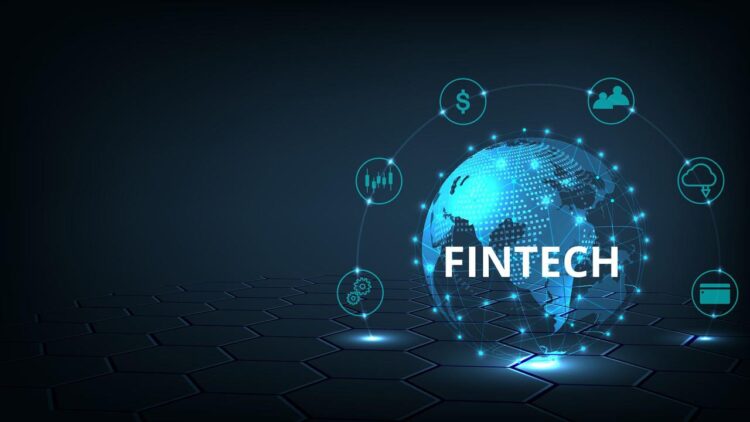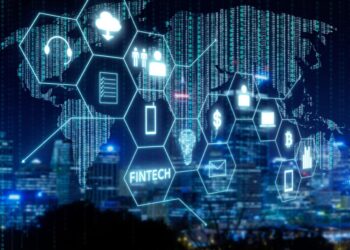The financial industry, long characterized by traditional institutions and established processes, is undergoing a revolutionary transformation thanks to Fintech innovations. This convergence of finance and technology is not merely an evolution; it’s a profound disruption, reshaping how we bank, invest, borrow, and transact. From mobile payments and blockchain-powered solutions to artificial intelligence in lending and personalized financial advice, Fintech is democratizing access to financial services, increasing efficiency, and challenging incumbent models. This comprehensive guide will delve into the driving forces behind this seismic shift, explore the most impactful Fintech innovations emerging today, and analyze their implications for consumers, businesses, and the global financial landscape. We’ll examine key trends, emerging opportunities, and potential challenges.
The Genesis of Fintech Disruption

The rise of Fintech is not accidental; it’s the culmination of several converging forces that have created fertile ground for innovation to flourish.
- A. Technological Advancements:
- A. Ubiquitous Internet and Mobile Penetration: The widespread availability of high-speed internet and smartphones has created a massive platform for digital financial services, enabling access anytime, anywhere.
- B. Cloud Computing: Scalable, cost-effective cloud infrastructure allows Fintech startups to build and deploy complex financial applications without massive upfront IT investments.
- C. Big Data and Analytics: The ability to collect, process, and analyze vast amounts of data has enabled more personalized financial products, better risk assessment, and predictive modeling.
- D. Artificial Intelligence (AI) and Machine Learning (ML): AI/ML algorithms power everything from fraud detection and credit scoring to automated trading and personalized financial advice.
- E. Blockchain Technology: Distributed ledger technology (DLT) offers new paradigms for secure, transparent, and immutable record-keeping, underpinning cryptocurrencies and revolutionizing various financial processes.
- B. Evolving Consumer Expectations:
- A. Demand for Convenience and Speed: Consumers, accustomed to instant gratification in other industries (e-commerce, entertainment), now expect similar seamless, on-demand experiences from their financial service providers.
- B. Personalization: Generic financial products are being replaced by tailored solutions that cater to individual needs and preferences.
- C. Digital Natives: Younger generations, who grew up with digital technology, inherently prefer digital interfaces and self-service options for managing their money.
- C. Regulatory Shifts and Open Banking Initiatives:
- A. Regulatory Sandbox Environments: Many regulators globally are creating “sandboxes” where Fintech companies can test innovative products in a controlled environment, fostering innovation while managing risk.
- B. Open Banking: Initiatives (like PSD2 in Europe) mandate that banks open up their data and services to third-party providers (with customer consent), fostering competition and enabling new services. This allows for greater interoperability and data sharing.
- C. Regulatory Support for Innovation: Governments increasingly recognize Fintech’s potential to drive financial inclusion and economic growth, leading to more supportive regulatory frameworks.
- D. Post-2008 Financial Crisis Legacy:
- A. Erosion of Trust in Traditional Banks: The global financial crisis led to a significant loss of public trust in large financial institutions.
- B. Stringent Regulations on Banks: Increased regulatory scrutiny made it harder for traditional banks to innovate quickly, creating an opening for agile Fintech startups.
- C. Search for Efficiency: Banks themselves began to look for technological solutions to reduce costs and improve efficiency.
- E. Financial Inclusion Imperative:
- A. Underserved Populations: Billions globally remain unbanked or underbanked. Fintech offers low-cost, accessible solutions to bring financial services to these populations, leveraging mobile technology.
- B. Remittances: Fintech solutions have dramatically lowered the cost and increased the speed of international money transfers, benefiting migrant workers and their families.
Key Disruptive Fintech Innovations Explored
The Fintech landscape is vast, but certain innovations are having the most profound impact.
A. Digital Payments and Wallets
- A. Mobile Payments: Services like Apple Pay, Google Pay, Samsung Pay, and local equivalents (e.g., GoPay, OVO in Indonesia) allow users to make payments directly from their smartphones, often using NFC (Near Field Communication) or QR codes.
- B. Peer-to-Peer (P2P) Payments: Apps like Venmo, Zelle, and PayPal enable instant money transfers between individuals, bypassing traditional banking rails for small transactions.
- C. E-wallets: Digital platforms that store payment information and often integrate loyalty programs, public transport tickets, and other functionalities, reducing the need for physical cards or cash.
- D. Contactless Payments: The global shift towards tap-to-pay solutions, accelerated by the pandemic, enhances convenience and hygiene.
- Impact: Increased convenience, speed, and security of transactions; reduced reliance on cash; facilitated cross-border payments.
B. Blockchain and Cryptocurrencies
- A. Decentralized Ledgers: Blockchain technology provides a secure, transparent, and immutable record of transactions across a distributed network, eliminating the need for a central authority.
- B. Cryptocurrencies (e.g., Bitcoin, Ethereum): Digital assets designed to work as a medium of exchange, often using cryptography to secure transactions and control the creation of new units.
- 1. Store of Value: Some see Bitcoin as “digital gold,” a hedge against inflation.
- 2. Medium of Exchange: Growing acceptance for purchases and services.
- 3. Programmable Money (Smart Contracts): Ethereum’s blockchain enables “smart contracts” – self-executing agreements with the terms directly written into code, revolutionizing legal, financial, and supply chain processes.
- C. Decentralized Finance (DeFi): An ecosystem of financial applications built on blockchain (primarily Ethereum) that aims to recreate traditional financial services (lending, borrowing, trading) in a decentralized, permissionless, and transparent manner, without intermediaries.
- D. NFTs (Non-Fungible Tokens): Unique digital assets recorded on a blockchain, representing ownership of digital or physical items (art, music, collectibles).
- Impact: Potential for greater transparency, efficiency, and security in financial transactions; new asset classes; financial inclusion for the unbanked; challenging traditional banking models.
C. Artificial Intelligence (AI) and Machine Learning (ML)
- A. Personalized Financial Advice (Robo-Advisors): AI algorithms manage investment portfolios based on user-defined risk tolerance and goals, offering low-cost, automated investment services (e.g., Betterment, Wealthfront).
- B. Fraud Detection: AI systems can analyze vast amounts of transaction data in real-time to identify patterns indicative of fraudulent activity, significantly enhancing security.
- C. Credit Scoring and Lending: AI models assess creditworthiness beyond traditional credit scores, using alternative data sources (e.g., rental payments, utility bills) to provide more inclusive and accurate lending decisions. This can benefit underserved populations.
- D. Algorithmic Trading: AI-powered systems execute trades at high speeds based on complex algorithms, optimizing trading strategies.
- E. Customer Service (Chatbots and Virtual Assistants): AI-powered chatbots handle routine customer inquiries, providing instant support and freeing up human agents for complex issues.
- Impact: Enhanced personalization, improved risk management, increased efficiency, and greater financial inclusion.
D. RegTech (Regulatory Technology) and SupTech (Supervisory Technology)
- A. Automation of Compliance: RegTech uses technology to automate and streamline regulatory compliance processes for financial institutions, reducing manual errors and costs.
- B. Real-time Monitoring: Allows regulators (SupTech) to monitor financial markets and institutions in real-time for compliance, systemic risks, and fraud.
- C. Data Management: Helps manage the vast amounts of data required for regulatory reporting.
- Impact: Reduced compliance costs for financial institutions, improved regulatory oversight, and enhanced financial stability.
E. Insurtech (Insurance Technology)
- A. Personalized Premiums: AI and big data analyze individual behavior (e.g., driving habits via telematics, health data from wearables) to offer highly personalized insurance premiums.
- B. On-Demand Insurance: Micro-insurance and short-term coverage for specific needs (e.g., travel, single event insurance).
- C. Streamlined Claims Processing: AI and automation speed up claims assessment and payout.
- D. Peer-to-Peer Insurance: Groups of individuals pool premiums to cover each other’s risks.
- Impact: More tailored and affordable insurance products, increased efficiency, and improved customer experience.
F. Open Banking and API Economy
- A. Data Sharing (with Consent): Enables secure sharing of financial data between banks and authorized third-party applications (Fintechs) via Application Programming Interfaces (APIs).
- B. New Services: Facilitates the creation of innovative services like personalized budgeting tools that aggregate data from multiple bank accounts, smarter lending applications, and seamless payment initiations directly from third-party apps.
- C. Increased Competition: Lowers barriers to entry for new Fintech players and fosters a more competitive financial ecosystem.
- Impact: Greater transparency, customer empowerment, and a wave of new integrated financial services.
Implications of Fintech Innovation

The widespread adoption of Fintech carries profound implications for various stakeholders.
A. For Consumers
- A. Increased Access and Inclusion: Fintech often provides financial services to underserved populations who previously lacked access to traditional banking.
- B. Lower Costs: Reduced operational overhead often translates to lower fees for transactions, loans, and investment services.
- C. Enhanced User Experience: Seamless, intuitive digital interfaces and personalized services improve customer satisfaction.
- D. Greater Control and Transparency: Users have more real-time control over their finances and clearer visibility into transactions and account information.
- E. Personalized Products: Tailored recommendations for loans, investments, and insurance based on individual data.
B. For Businesses (Especially SMEs)
- A. Easier Access to Capital: Alternative lending platforms provide faster and often more flexible financing options for small and medium-sized enterprises (SMEs) that may struggle with traditional bank loans.
- B. Efficient Payment Solutions: Digital payment gateways, cross-border payment platforms, and integrated e-commerce solutions streamline business operations.
- C. Improved Financial Management: Fintech tools offer better budgeting, expense tracking, and accounting solutions.
- D. Data-Driven Insights: Analytics tools provide businesses with deeper insights into their financial performance and customer behavior.
C. For Traditional Financial Institutions
- A. The Innovate-or-Perish Dilemma: Banks must either innovate rapidly themselves or collaborate with Fintechs to remain competitive.
- B. Cost Reduction: Fintech solutions can help banks streamline back-office operations, reduce manual errors, and cut costs.
- C. Enhanced Customer Experience: Adopting Fintech solutions can help traditional banks meet evolving customer expectations.
- D. Cybersecurity Challenges: Increased digitalization also brings higher risks of cyberattacks, necessitating robust security measures.
- E. Talent War: Competing with agile Fintech startups for top tech talent.
D. For the Global Economy
- A. Financial Inclusion: Driving economic development by bringing more people into the formal financial system.
- B. Increased Efficiency: Streamlining financial processes reduces transaction costs and increases speed, fostering economic growth.
- C. New Economic Models: Facilitating the growth of the gig economy, digital marketplaces, and decentralized autonomous organizations (DAOs).
- D. Regulatory Challenges: Regulators face the complex task of fostering innovation while ensuring consumer protection, financial stability, and combating illicit activities like money laundering.
- E. Digital Divide: While improving inclusion, there’s also a risk of exacerbating the digital divide if certain populations lack access to the necessary technology.
The Future Trends and Challenges
Fintech is a rapidly evolving field, with continuous innovation and new challenges emerging.
A. Future Trends
- A. Embedded Finance: Financial services becoming seamlessly integrated into non-financial platforms and apps (e.g., buying insurance when booking a flight, getting a loan within an e-commerce checkout).
- B. Web3 and Decentralized Finance (DeFi) Maturation: Further development of blockchain-based financial systems, addressing scalability and regulatory clarity.
- C. Hyper-Personalization: AI-driven financial advice and product offerings becoming even more tailored to individual needs and real-time financial situations.
- D. Central Bank Digital Currencies (CBDCs): Many countries are exploring or developing their own digital currencies, which could transform the payments landscape.
- E. ESG (Environmental, Social, Governance) Fintech: Tools and platforms enabling sustainable and ethical investing, and helping companies track and report on their ESG performance.
- F. AI-Driven Fraud and Security: More sophisticated AI to detect and prevent complex cyber threats.
B. Challenges and Risks
- A. Regulatory Uncertainty: The fast pace of innovation often outpaces regulatory frameworks, creating uncertainty for businesses and potential risks for consumers.
- B. Cybersecurity Threats: The increased reliance on digital platforms makes financial systems more vulnerable to cyberattacks, data breaches, and fraud.
- C. Data Privacy: Managing and protecting vast amounts of sensitive financial data in compliance with evolving privacy regulations (e.g., GDPR, CCPA) is a major challenge.
- D. Financial Literacy: As financial products become more complex and digital, ensuring consumers have the necessary literacy to make informed decisions is crucial.
- E. Systemic Risk: Interconnectedness of Fintech platforms could potentially introduce new forms of systemic risk if not properly managed.
- F. Digital Divide: Ensuring that Fintech benefits all segments of society, and doesn’t leave behind those without access to technology or digital literacy.
Conclusion
Fintech innovations are not just a fleeting trend; they represent a fundamental reshaping of the financial world. They are driven by technological leaps, changing consumer demands, and a global push for greater efficiency and inclusion. By understanding the core technologies, the diverse applications, and the profound implications of this revolution, consumers can gain greater control over their financial lives, businesses can operate more efficiently, and financial institutions can innovate to remain relevant. While challenges related to regulation, security, and ethics remain, the transformative power of Fintech promises a future where financial services are more accessible, personalized, and seamless than ever before. Embrace this revolution, stay informed, and harness the power of Fintech to shape your financial tomorrow.












